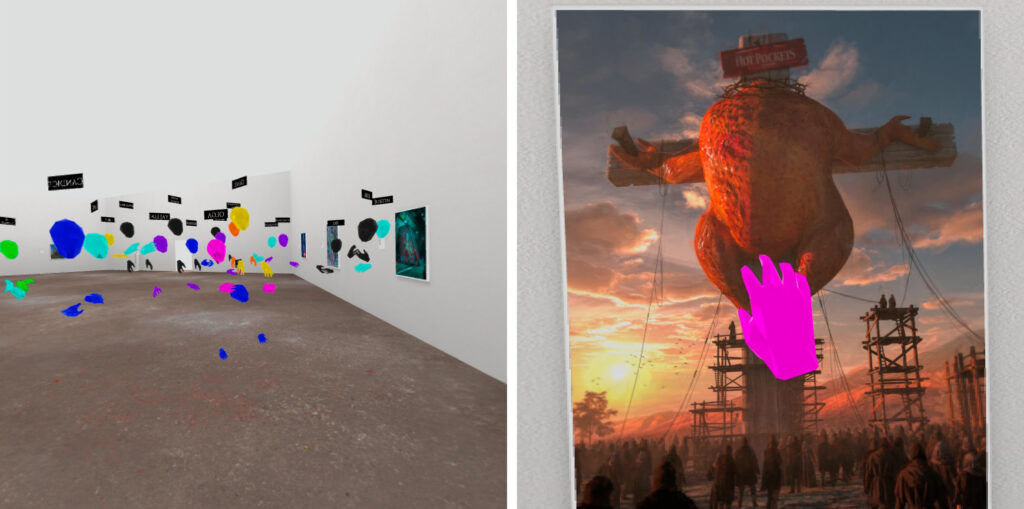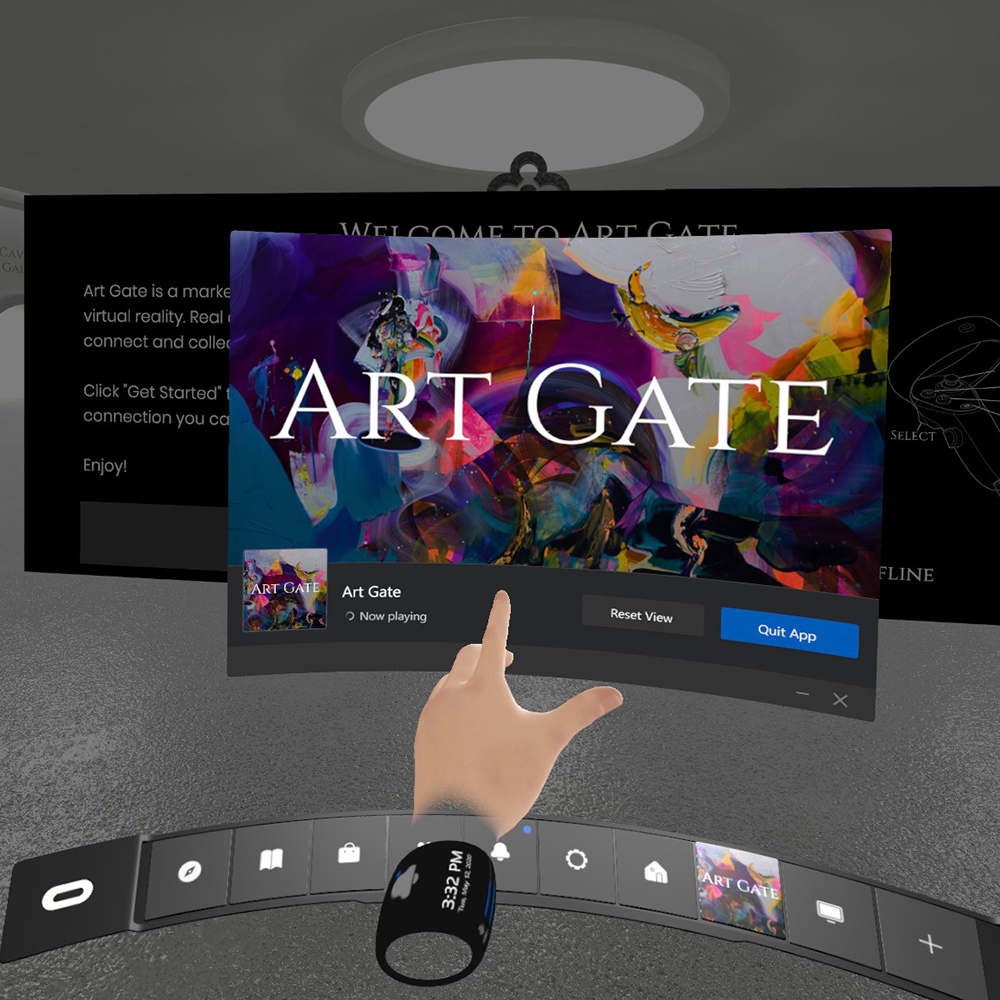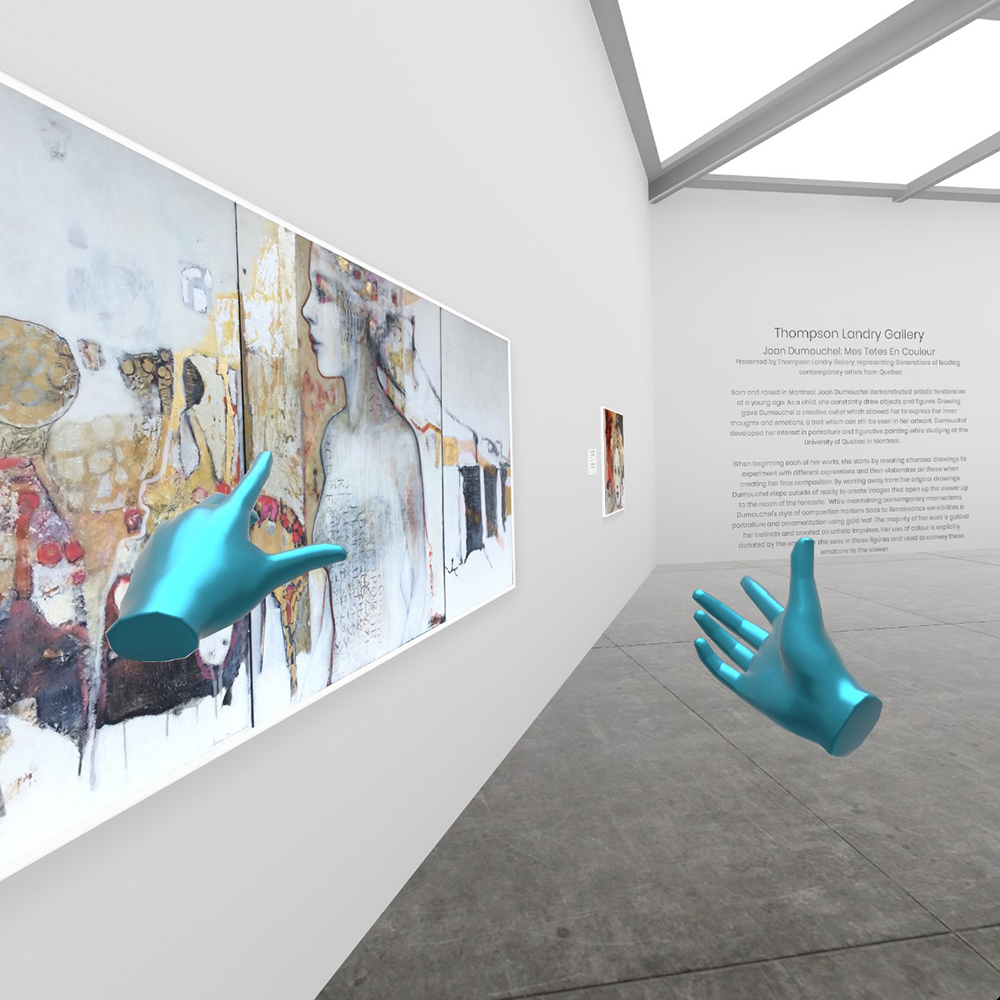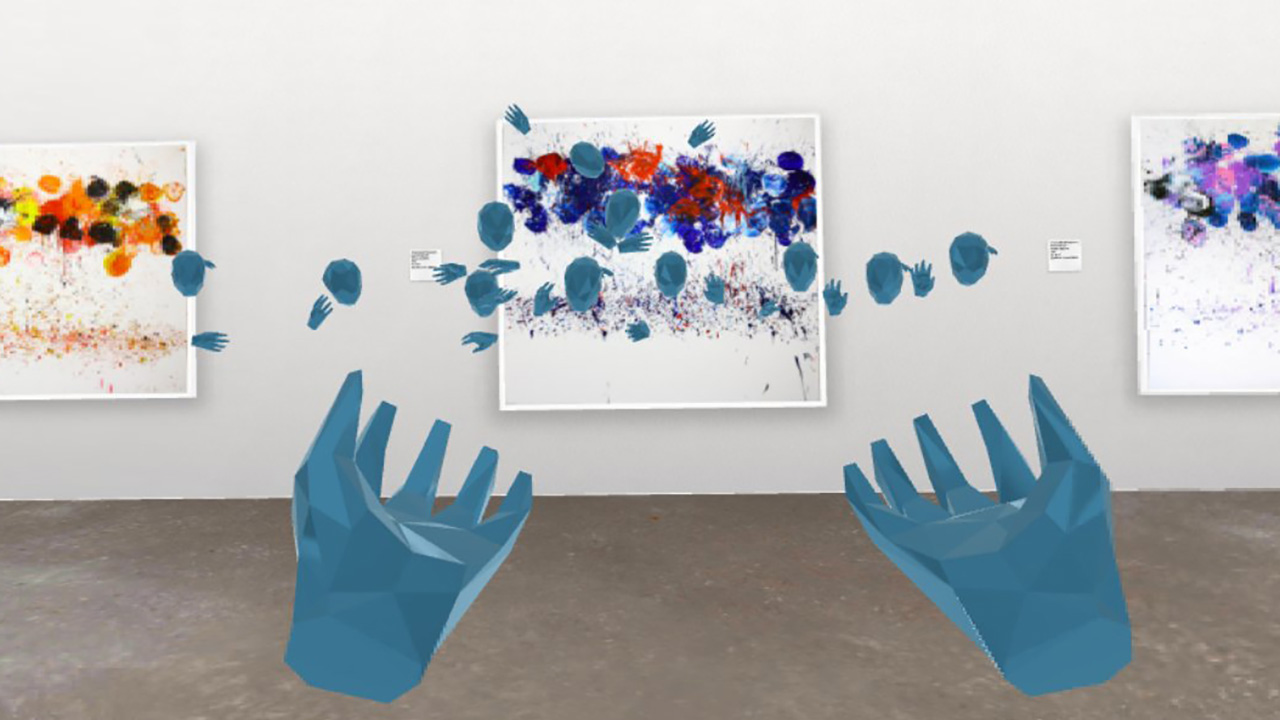In the void of a gleaming white gallery, a colorful crowd is gathered for a late afternoon panel discussion. The artist is running late and in the interim, some inspect the art, while others make idle chitchat about the weather. Only Laakkuluk Williamson Bathory, the expected artist, isn’t trapped in traffic — she’s been “stuck upside down in the ether,” as the Greenlandic creative jauntily declares upon arriving in virtual space.
The event is Art Gate International, an art fair in virtual reality (VR), which in mid-April brought artists, gallerists, technologists, and anyone with a headset together for four days of showings, discussions, and virtual mingling.
Less socially onerous than the real thing and infinitely more personal and dynamic than Zoom, visitors to the fair found a surreal concept surprisingly normal and that gliding around dozens of hexagonal galleries was a smooth and satisfying experience, one in which Laakkuluk’s technological hiccup was notable for being an anomaly.

Scenes from Art Gate International 2021, including a gallery of Beeple’s NFT works (right). Images: Richard Whiddington
Having launched in 2019, Art Gate VR was well-placed to offer intrepid galleries a means of showing work once the pandemic forced shutdowns and hit pause on the global merry-go-round of art fairs. If 2020’s inaugural fair was a fun and fancifully futuristic stop-gap measure, this year’s effort, free and easily accessible, made a compelling case for the technology becoming a viable, long-term channel for art world meetings.
The platform has welcomed more than 35,000 visitors in a little over two years and claims to be the world’s fastest growing arts community in virtual reality — certainly credible given the intuitive user experience on display at the fair: users selected an avatar color, typed out a nickname (helpfully displayed above each avatar’s head), and chose a navigation style (locomotion for the pros or teleport for those averse to motion sickness) before being beamed into a cavernous main atrium. Visitors were free to enter one of the adjoining galleries or click through a full menu of offerings. For the confused visitor — artistically, technologically, or otherwise — Art Gate staff ghosted around the main hall throughout the event offering guidance and casual conversation.

An intuitive user experience and helpful guides at the event ensure that the VR technology poses no barrier to visitors. Image: Art Gate International
The fair’s offerings were broad and interdisciplinary. Art-goers could wander contemporary art galleries from six continents, peruse rooms mounted with classics from Pablo Picasso to Andy Warhol, attend live musical performances, or join fireside chats with art and tech insiders — one of which offered the most quintessential of 2021 moments: a virtual reality discussion of NFTs in a room lined with works by Beeple.
In non-fair times, Art Gate operates like a landlord leasing virtual space to a steadily growing number of galleries who stage exhibitions, meet clients, and host events virtually. The pitch is simple, Art Gate VR’s CEO Brendon McNaughton tells Jing Culture & Commerce inside virtual reality: “In VR, you have more foot traffic from collectors all over the world at a fraction of the cost [of physical spaces]. It’s a no brainer.”
McNaughton’s burgeoning career as an internationally touring sculptor led him to seek out a more sustainable alternative to constantly shipping his work, and himself, around the world. The first step was uploading “Blue Chip,” an eight-foot crinkle-cut piece of financial commentary, and then welcoming artists, galleries, collectors to put artwork into virtual reality, “a side project that has grown rapidly and very organically.”

A view of Thompson Landry Gallery at the VR event. Image: Art Gate International
More than a third of global galleries now operate without a physical location, according to Artsy’s 2021 report, a pivot online that potentially dovetails neatly with a VR market that is expected to double in size by 2023. For some, VR presents a more engaging alternative to simply uploading images to a webpage; for others, a means of reaching distant audiences and complementing traditional physical operations.
Toronto Outdoor Art Fair, the largest of its kind in North America, is one such believer and is set to open a parallel VR experience alongside its 60th anniversary event this summer. “We want to stay relevant and move forward by trying out VR,” Carmen Garvez, the fair’s Communications and Marketing Lead, said during a panel about art fairs. The dream, Garvez and her fellow panelists noted, would be a click-to-purchase function given “some buyers don’t want to speak to people and some artists aren’t good communicators.”
Integrating payments, whether cryptocurrency or regular old credit cards, is certainly a direction McNaughton is keenly aware of, but for now Art Gate is focused on steady growth, preparing for its upcoming Metabienale in November, and ironing out virtual kinks. “We didn’t crash,” McNaughton declared, blue hands raised triumphantly aloft during the fair’s closing remarks. True, but hardly the most miraculous part of a weekend spent sailing through virtual space flouting all social distancing rules.



